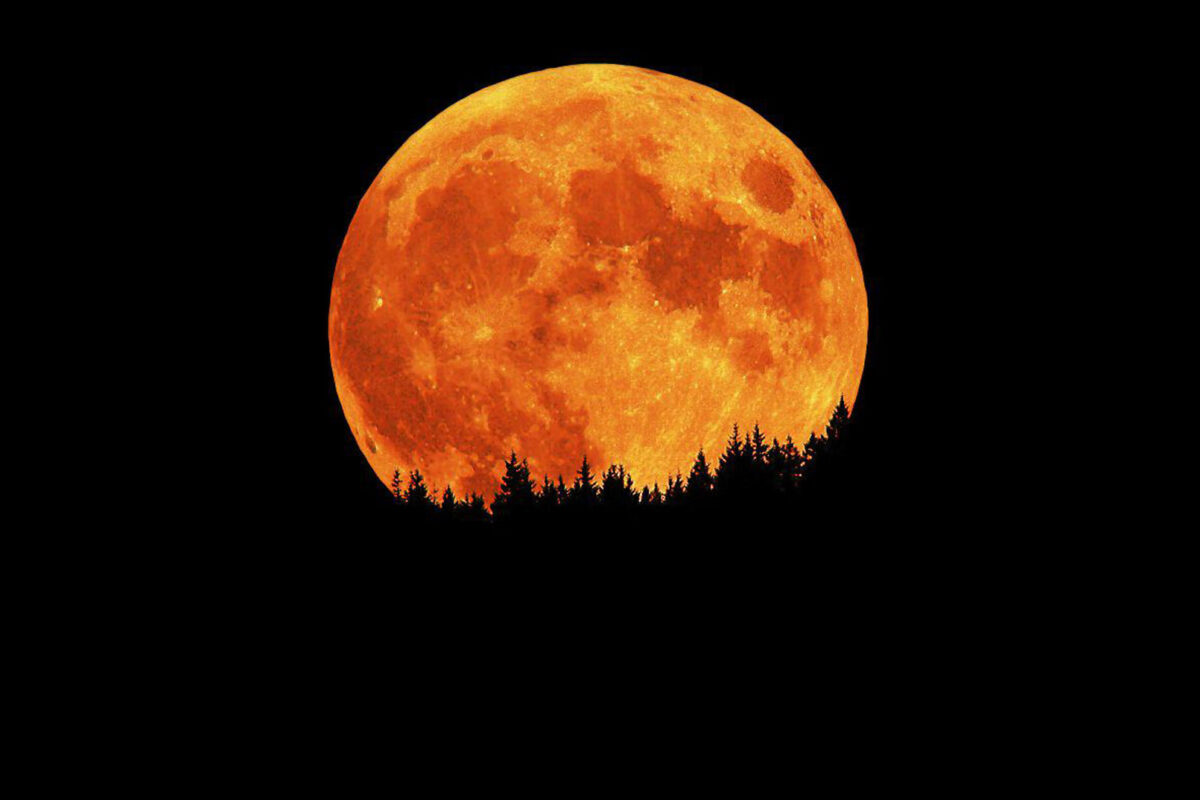
The Moons of October – Part 2
Part 1 discussed the Harvest Moon (October 1st 2020) and how it is defined by the time of the autumn equinox and can vary in date from September 14th to October 8th. The full moon following the Harvest Moon is called the Hunter’s Moon, and its date can vary from October 13th to November 6th. In 2020, the Hunters Moon is full at 9:49 am CDT on October 31st – Halloween. Despite the frequent depictions of witches, bats or cats silhouetted against a full moon in Halloween images, Halloween full moons are fairly rare, about once every 19 years following the Metonic cycle, or 3 to 4 times a century at a given location, depending on the calendar and clock. The previous one was in 2001 and the next one will be in 2039. Of course, the moon appears nearly full a couple of days around the date, so the prospects for trick-or-treat atmospherics aren’t quite so bleak.
The true nerds among you may want to try tracking down a copy of “A Night in the Lonely October” published in 1993, the last novel and personal favorite of Roger Zelazny, the famous American sci-fi and fantasy writer. The premise is that when full moon occurs on Halloween, the fabric of reality thins and it becomes possible to open the portal unleashing the Lovecraftian “Great Old Ones” to wreak destruction and insanity upon the world. There is an occult struggle between Openers and Closers to determine if this happens. (Sounds like a good metaphor of the current election). The story is told from the viewpoint of Snuff, Jack the Ripper’s dog. There are 32 chapters, one for each night in October plus an introduction. Along the way, fictional and real personages and their animal familiars are introduced, though few are named and you have to infer their identities from Snuff’s descriptions. Gahan Wilson, famous for his macabre cartoons, did the illustrations (one per chapter).
This Hunters Moon is also a blue moon. There are two definitions of a blue moon. The 2nd, which is the one you’ll hear from your TV meteorologist, is that it is the 2nd full moon in a month. This dates from an article published in 1946, which was a misinterpretation of the blue moon listings in the Maine Farmer’s Almanac. The 1st definition, dating back to the 19th century, is the actual definition used by the Almanac – the third full moon in a season with four full moons. A complication is that the seasons used were based on the mean tropical year and defined so that the seasons had equal numbers of days (except for winter because February comes up a bit short). This differs from the astronomical definition of the start of seasons based on the dates of equinoxes and solstices. It appears to be the same as what is called the meteorological definition of seasons where, for example, autumn starts on September 1st instead of the equinox, which is why you probably won’t hear about this definition from the TV meteorologist. It’s too complicated for 5-second sound bite. The next blue moon by the 1st definition is on August 22nd 2021, while the next one by the 2nd definition is August 31st, 2023. The Hunters Moon of 2020 is blue by both definitions – a doubly blue moon. For children it’s indeed a blue Halloween with normal trick-or-treating cancelled by the pandemic. However, the candy makers say sales are up significantly suggesting childhood obesity won’t be thwarted and adults won’t be sneaking candy from the bag. (Note: the origin of the definition of a blue moon is not clear, but the Maine Farmer’s Almanac used the term to avoid giving full moon names to these extra full moons. However, the Harvest and Hunters Moons retain their names when blue.)